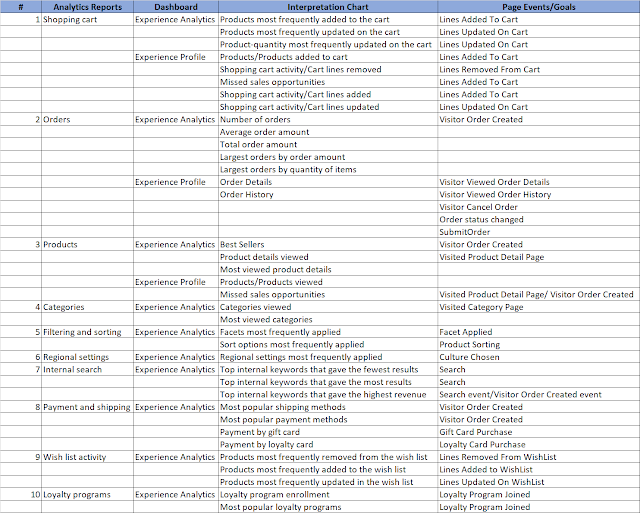Sitecore - On-Premises to Azure PaaS (ASE) Cloud Migration - Part 2
Sitecore - On-Premises to Azure PaaS (ASE) Cloud Migration - Part 2
Security aspects considered while designing the new Azure
PaaS infrastructure
- Sitecore Web applications are hosted inside Azure App Service Environment (ASE) which is an Azure App Service feature that provides a fully isolated, dedicated and secure environment to run App Service applications
- WAF protection
o
WAF feature of the Application Gateway provides
centralized protection for your web applications from common exploits and
vulnerabilities.
o
WAF is based on rules from the Open Web
Application Security Project (OWASP) core rule sets 3.0 or 2.2.9.
o
Sitecore Content Delivery server runs behind WAF
and IP restrictions on the Web App. These limits access only from the
Application Gateway
·
With Application Gateway, only IPs from certain countries
were allowed (based on previous Ddos attack). IP restriction will be an ongoing
activity and any malicious IPs will be added to the list as and when they are
identified.
·
Key Vault to Secure keys and credentials
o
Azure Key Vault is used to secure the keys and
secrets by encryption. It uses keys that are protected by HSMs.
·
Restrict access based on least privilege security
principles
o
Use RBAC to provide permissions to users,
groups, and applications.
·
Restrict incoming source IP addresses
o
ASE’s VNET feature helps restrict incoming
source IP addresses through network security groups (NSG). VNET enable to place
Azure resources in a non-internet, routable network that can be access
controlled.
·
Use Azure AD authentication to connect to
databases instead of SQL Server authentication. This will help in controlling the
proliferation of user identities across database servers.
·
Use Azure SQL firewall for access restriction
o
Restrict to only allow IP addresses to access
the web application instance.
·
Encrypt data at rest
o
Use Transparent Data Encryption (TDE) feature
which is enabled by default. This transparently encrypts SQL Server, Azure SQL Database,
and Azure SQL Data Warehouse data and log files and protects against a
compromise of direct access to the files or their backup. There by enables to
encrypt data at rest without changing existing applications.
·
Connection
string are stored in App setting, so they are encrypted at REST and during
transit.
·
Access is limited via deny anonymous access
web.config rules
o
For CD servers, anonymous access is denied to:
§
/App_Config
§
/xsl
§
/sitecore modules/Shell
§
/sitecore modules/debug
§
/sitecore
·
App Service will not serve requests for .configs
via default request filtering rules
·
Non-HTTPS requests are caught at CDN level & redirected to
HTTPS
·
Request Validation is enabled by default.
STRIDE threats and
mitigations that are considered as part of the design
|
# |
Risk |
Area of concern |
Mitigation |
|
1 |
Spoofing |
Authentication |
HTTPS connection |
|
2 |
Tampering |
Integrity |
Valid SSL certificates |
|
3 |
Repudiation |
Non-repudiation |
Enable Azure monitoring and
diagnostics |
|
4 |
Information disclosure |
Confidentiality |
Encrypt sensitive data |
|
5 |
Denial of Service |
Availability |
Monitor performance metrics for
potential DoS and implement connection filters |
|
6 |
Elevation of Privilege |
Authorization |
Uses AD Authentication on content
Authoring and custom Authorization for customers |
Design for Disaster Recovery
Design of the Azure PaaS environment
will be with Zone redundancy and Geo Replication. Therefore, No separate DR
environment is required.
Azure SQL (Sitecore
Databases): Azure SQL Database automatically
creates database backups and uses Azure read-access geo-redundant storage
(RA-GRS) to provide geo-redundancy.
These backups are created automatically, at no additional charge, and
are retained for 35days.
|
# |
Resource |
Backup
technology |
Secondary
environment |
|
1 |
App service environment |
NA |
Created on-demand. |
|
2 |
App Service plan |
NA |
Created on-demand. |
|
3 |
Azure SQL Databases |
SQL Azure Geo-Replication. |
Fully deployed |
|
4 |
Azure Storage Account |
NA |
Created on-demand. |
|
5 |
Application Gateway |
-Gateway created in two different regions. -Zone Redundancy |
Fully deployed |
|
6 |
Azure Key vault |
NA |
Created on-demand. |
|
7 |
Azure Mongo DB Atlas |
Completely managed |
Completely managed |
Azure Web app Backups
Backups are configured on Sitecore Content Delivery &
Content Management web apps. The backups will be stored in a blob storage in
different containers.
The backup policy is as below:
·
Backup
to happen every day.
·
Retention
period of 31 days.
Logging
The following logs will be streamed to
Azure Event hub
|
Resource |
Log
type |
Description |
|
Web App |
AppServiceConsoleLogs |
Standard output and standard error |
|
AppServiceHTTPLogs |
Web server logs |
|
|
AppServiceAuditLogs |
Login activity via FTP and Kudu |
|
|
AppServiceFileAuditLogs |
File changes via FTP and Kudu |
|
|
AppServiceAppLogs |
Application logs |
|
|
NSG |
Network Security Group Event |
Entries are logged for which NSG
rules are applied |
|
Network Security Group Rule Counter |
Contains entries for how many times
each NSG rule is applied to deny or allow traffic |
|
|
Application Gateway |
Access Logs |
View Application Gateway access
patterns |
|
Performance Logs |
Application Gateway instances performance |
|
|
Firewall Logs |
Requests logged through detection /
prevention |
|
|
CDN |
Access Logs |
View CDN access patterns |



Comments
Post a Comment